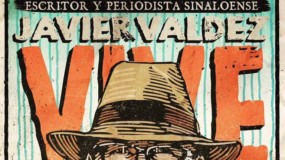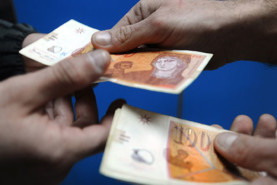Posted on 13 Jun 2016
According to a report by the Committee to Protect Journalists (CPJ), 69 journalists were confirmed killed doing their work in 2015 and more than two thirds of them were intentionally targeted in hits intended to silence them. Globally, the murder rate of journalists is one in every five days.
While it is little surprise that conflict zones such as Syria, Yemen, Iraq, and South Sudan would be among the most dangerous countries for journalists, few would have predicted that France, where Al Qaeda in the Arabian Peninsula killed nine journalists, would come second, only behind Syria, among the countries where journalists were killed. Such is the nature of terrorist threats that even in places far away from the frontlines, journalists can become targets of terrorist groups and militant organizations seeking to go global.
These attacks come at a time when governments around the world are also cracking down on journalists. In its most recent prison census, CPJ found that journalists face threats from terrorist groups on the one hand, and “authorities purporting to fight terror” on the other. Of the 199 journalists imprisoned in 2015, CPJ found, at least 110 of were jailed on anti-state charges.
Further underscoring the fact that there is no “safe place” for journalists is the fact newsgatherers are regularly finding themselves targeted by organized crime syndicates. Over half of journalists murdered since 1992 (a total of 786, 681 with complete impunity) could be attributed to organised crime networks. Even in places where press freedoms are robust and the rule of law is strong. in Ireland, for example, a number of journalists have received death threats from organized criminals. Regardless of context, in cases where journalists are targeted by organised criminals, the attackers often remain unknown. often connected to criminal networks, corrupt government officials, or both.
Nowhere are the challenges that come with protecting journalists who seek to report on organised crime more acute than in Mexico, a country widely regarded as “one of the most dangerous countries in the world to defend human rights and practice journalism.” Per a recent report by WOLA and Peace Brigades International, “Attacks on defenders and journalists occur regularly, creating a worrisome environment of self-censorship and intimidation.” The report states:
“In recent months, there have also been increasing and troubling attempts in Mexico to publicity discredit organizations that defend human rights and the freedom of expression, as well as regional and international human rights bodies and their representatives.”
Strategies to protect journalists from threats of organised crime
For obvious reasons, organized crime syndicates and corrupt government officials have strong incentives to keep their activities hidden, which makes silencing and intimidating journalists an essential part of their operations. Threats and acts of violence against journalists not only prevent specific information from seeing the light of day, it also acts as a strong deterrent against future reporting and investigations on organized crime.
Therefore, for those seeking to counter organised crime, protect the rule of law and promote political integrity, protecting the safety of the media, particularly independent media is critical. To achieve this will require action from many stakeholders.
In November 2012, the Mexican government established the national Mechanism to Protect Human Rights Defenders and Journalists (Mecanismo de Protección para Personas Defensoras de Derechos Humanos y Periodistas), in an effort to provide journalists at risk with immediate access to protection. While potentially an important initiative, the WOLA-PBI report, however, found that this effort by the Mexican government falls short in protecting journalists and human right defenders. These shortcomings are mainly based on:
- Insufficient number of staff working within the mechanism;
- Protection measures are often not adequately implemented;
- A disconnect between a journalist’s or defender’s situation of risk and the protection provided;
- A lack of immediate re-evaluation of cases when a journalist or defender is attacked while under protection;
- Difficulties faced in accessing the mechanism without assistance;
- Difficulties displaced journalists and defenders found to return to work or seek alternative employment.
Overall, the report concludes, “the failure to investigate and sanction attacks on human rights defenders and journalists places them at continued risk.”
What then would the Mexican, or another government need to achieve if they were to strengthen the capacity of journalists and the media?
Drawing on the WOLA-PBI recommendations, as well as those developed by civil society networks to protect investigative journalists, the following are strategies that governments could consider:
- Public and repeated recognition of the role of human rights defenders and journalists as part of a democratic state, the risks they face in their daily work, and the government’s responsibility to protect them;
- States must fully, effectively, and impartially investigate the murder of journalists and clarify the motives and judicially determine any relation they could have with journalistic activity and freedom of expression;
- Supporting through political support and financing the work of independent journalism networks and advocacy organisations in civil society;
- Continuing to improve and strengthen risk analysis practices;
- Publicly reporting on the effectiveness of protection measures.
But governments are not the only actors.
A number of networks exist to protect and advocate for journalists in the civil society space: organisations such as the Committee to Protect Journalists; the Global Investigative Journalists Network, among others that operate sub-regionally. However, their efforts can be better supported through funding, political support and advocacy at all levels.
The tech sector could promote secured spaces for storing data, publishing stories and creating civilian led safety initiatives that would allow them to publish anonymously and protect them from the scrutiny and retribution of organised crime groups.
While non-profit organizations and journalist associations have done well to provide various resources that teach journalists how to conduct investigative work on organized crime, including training being delivered by the Global Initiative, there is relatively little information available on what tools and methods journalists can use to minimize and assess risk throughout the reporting process, from story-development all the way to publication.
More can be done to train and equip journalists to mitigate threats from the powerful individuals and organizations they report on. Expertise resides within law enforcement and the private sector on how to conduct investigations safely and effectively. Just as there is a robust industry made up of security professionals and first responders who leverage their expertise to offer training to international community and diplomats on how to function in hostile environments, similar types of training, which bring together disparate actors each with their own areas of expertise, could be developed to fill the critical need in training journalists on how to access and mitigate risks when reporting on organized crime.
Journalists are finding alternative ways to publish dangerous stories. In Central Asia and other parts of the world, many have published risky stories under pseudonyms. News outlets in Latin America have run stories with generic bylines, such as the “Justice and Peace Unit” label used by the Colombian newspaper El Espectador.
News organizations can also work together on dangerous topics, sharing information and publishing a story simultaneously without individual bylines. The approach has proved effective in diffusing the risk against any individual journalist while enabling reporters to cover hazardous topics, and the results from collaborative investigations can be extraordinary, as the Panama Papers demonstrated.
The sanctity of the ‘Fourth Estate’ is a powerful means by which to ensure democratic governance and the rule of law. Journalists take great risks to promote and protect these values. In free and fair societies, we therefore need to do make the same level of effort for them.
Tiempos peligrosos para los periodistas. ¿Cómo hacemos para protegerlos?
De acuerdo con un informe del Comité para la Protección de Periodistas (Committee to Protect Journalists – CPJ), 69 periodistas fueron asesinados en 2015 mientras realizaban su labor, y más de dos tercios de ellos fueron blanco de ataques para silenciarlos. A nivel mundial, un periodista es asesinado cada cinco días.
Si bien no es gran sorpresa que las zonas de conflicto como Siria, Yemen, Irak y Sudán del Sur estén entre los países más peligrosos para la labor de periodistas, pocos hubiesen imaginado que Francia, en donde Al Qaeda mató 9 periodistas, ocuparía el segundo lugar, sólo después de Siria. Tal es la naturaleza de la amenaza terrorista que incluso en sitios alejados de sus fronteras, los periodistas pueden convertirse en blanco de grupos terroristas y organizaciones militares que intentan expandirse globalmente.
Estos ataques surgen en un momento en el que los gobiernos en todo el mundo también están aplicando mano dura contra los periodistas. En el censo más reciente en prisiones, el CPJ reveló que los periodistas sufren amenazas de, por un lado, grupos terroristas y, por el otro, de “autoridades que afirman luchar contra el terror”. De los 199 periodistas encarcelados en 2015, el CPJ descubrió que al menos 110 estaban en prisión por subversión.
Para resaltar aun más el hecho de que no existe un “lugar seguro” para el periodismo, los periodistas también suelen ser blanco de organizaciones criminales. Más de la mitad de los asesinatos de periodistas desde 1992 (786 en total; 681 con total impunidad) podría ser atribuido a criminales organizados, incluso en sitios en los que la libertad de prensa es sólida y el estado de derecho es fuerte. En Irlanda, por ejemplo, varios periodistas recibieron amenazas de muerte por parte de organizaciones criminales. Más allá del contexto, en casos en donde los periodistas son blanco de organizaciones criminales, los agresores muchas veces no llegan a conocerse, y con frecuencia están ligados a redes criminales, funcionarios de gobierno corruptos, o ambos.
Los desafíos de proteger a los periodistas de las organizaciones criminales son realmente importantes en México, un país ampliamente conocido como “uno de los países mas peligrosos del mundo para defender los derechos humanos y la práctica periodística”. De acuerdo con un informe reciente de WOLA y Peace Brigades International, “Las agresiones contra defensores y periodistas ocurren con frecuencia, lo que genera un preocupante clima de autocensura e intimidación” El informe señala:
“En los últimos meses también se han visto en México crecientes y alarmantes intentos de desprestigiar públicamente a organizaciones defensoras de los derechos humanos y la libertad de expresión, así como organismos de derechos humanos regionales e internacionales y sus representantes “
Estrategias de protección de periodistas ante las amenazas de la delincuencia organizada
Por obvias razones, los grupos criminales y los funcionarios públicos corruptos tienen incentivos muy grandes para que sus actividades permanezcan en las sombras, lo que hace que la intimidación y el silenciamiento de periodistas sea una parte esencial de sus operaciones. Las amenazas y las agresiones contra periodistas no sólo evitan que la información salga a la luz, sino que también sirve como advertencia para futuras investigaciones sobre el crimen organizado.
Por tanto, para aquellos que buscan contraatacar la delincuencia organizada, proteger el estado de derecho y promover la integridad política, es crucial proteger la seguridad de los medios, particularmente de los medios independientes. Para lograrlo, se necesita el accionar de varias partes.
En noviembre de 2012, el gobierno federal de México estableció el Mecanismo de Protección para Personas Defensoras de Derechos Humanos y Periodistas en miras a brindar un acceso inmediato a la protección a aquellos periodistas que se encuentren en peligro. Si bien es potencialmente una iniciativa importante, el informe de WOLA-PBI sostiene, no obstante, que este esfuerzo del gobierno mexicano no llega a cumplir su objetivo. Estas deficiencias se basan principalmente en:
- La insuficiencia del número de personas que trabajan en el Mecanismo;
- Las medidas de protección, que muchas veces no son implementadas de manera adecuada;
- Una desconexión entre los riesgos que enfrentan los defensores y periodistas y la protección asignada;
- La falta de re-evaluación inmediata de los casos en los que un periodista o defensor es atacado mientras se le está brindando protección;
- Las dificultades de acceder al Mecanismo sin asistencia;
- Las dificultades que encuentran los periodistas y defensores desplazados de volver a su labor o de buscar un empleo alternativo.
En general, el informe concluye que el hecho de no poder investigar y de castigar las agresiones sobre los defensores de derechos humanos y periodistas, los pone en un riego continuo.
¿Qué necesitaría lograr el gobierno de México, y de cualquier otro país, para fortalecer la capacidad de los periodistas y los medios?
Basadas en las recomendaciones de WOLA-PBI y en las desarrolladas por redes de la sociedad civil que trabajan en la protección de periodistas de investigación, las siguientes son estrategias que los gobiernos podrían considerar:
- El reconocimiento público y reiterado del rol de los defensores de los derechos humanos y periodistas en un estado democrático, los riesgos que afrontan en su labor cotidiana, y la responsabilidad del gobierno de protegerlos;
- Los Estados deben investigar los asesinatos de periodistas de manera exhaustiva, efectiva e imparcial, clarificar los motivos y determinar judicialmente cualquier relación que pudieran tener con la actividad periodística y la libertad de expresión;
- El apoyo político y el financiamiento del trabajo de periodistas independientes y de organizaciones de defensa en la sociedad civil;
- Continuar mejorando y fortaleciendo las prácticas de análisis de riesgos;
- Informar públicamente la efectividad de las medidas de protección.
Pero los gobiernos no son los únicos actores.
Existe una serie de redes que protegen y defienden a los periodistas en la esfera de la sociedad civil, como el ya mencionado CPJ, la Red Global de Periodistas de Investigación, entre otras que operan a nivel sub-regional. No obstante, sus esfuerzos pueden tener un mejor apoyo mediante el financiamiento, el respaldo político y la defensa en todos los niveles.
El sector tecnológico puede promover espacios seguros para el almacenamiento de información, publicando historias y creando iniciativas lideradas por personas civiles que les permita publicar de manera anónima y protegerlos de la mirada y las represalias de los grupos criminales.
Si bien las organizaciones sin ánimo de lucro y las asociaciones de periodistas han brindado varios recursos para capacitar a los periodistas en el desarrollo de trabajos de investigación sobre el crimen y la delincuencia organizada, incluyendo las capacitaciones ofrecidas por la Iniciativa Global, hay relativamente poca información disponible sobre las herramientas y los métodos que los periodistas pueden emplear para minimizar y evaluar los riesgos a lo largo de su investigación, desde el desarrollo de la historia hasta su publicación.
Puede hacerse más para capacitar y equipar a los periodistas para mitigar las amenazas de las organizaciones y los individuos poderosos a los que investigan. Las fuerzas de seguridad y el sector privado son los que tienen conocimiento sobre cómo llevar adelante investigaciones de manera segura y efectiva. Del mismo modo que existe una industria fuerte de expertos en seguridad y de servicios de emergencia que ofrecen capacitación para la comunidad internacional y diplomáticos sobre cómo operar en ambientes hostiles, podrían desarrollarse capacitaciones similares que congreguen actores dispares, cada uno dentro de su área de experiencia, a fin de satisfacer la necesidad crítica de capacitar periodistas sobre cómo mitigar los riesgos a la hora de informar sobre la delincuencia organizada.
Los periodistas están encontrando formas alternativas de publicar historias peligrosas. En Asia Central, y en otras partes del mundo, muchos han optado por utilizar seudónimos. Las agencias de noticias en América Latina han publicado historias bajo firmas genéricas, como “Unidad sobre Paz y Justicia” utilizada por el periódico colombiano El Espectador.
Las organizaciones de noticias también pueden trabajar en conjunto en temas delicados, compartiendo información y publicando historias simultáneamente sin incluir firmas individuales. La estrategia ha probado ser efectiva ya que suaviza el riesgo contra cualquier periodista individual, y a la vez permite que se informe sobre asuntos peligrosos. Además, el resultado de las investigaciones colaborativas puede ser extraordinario, como lo demostraron los Panama Papers.
El “Cuarto Poder” es un medio poderoso que asegura la democracia y el estado de derecho. Los periodistas se enfrentan a grandes riesgos para promover y proteger estos valores. En sociedades libres y justas, debemos hacer el mismo nivel de esfuerzo por ellos.



